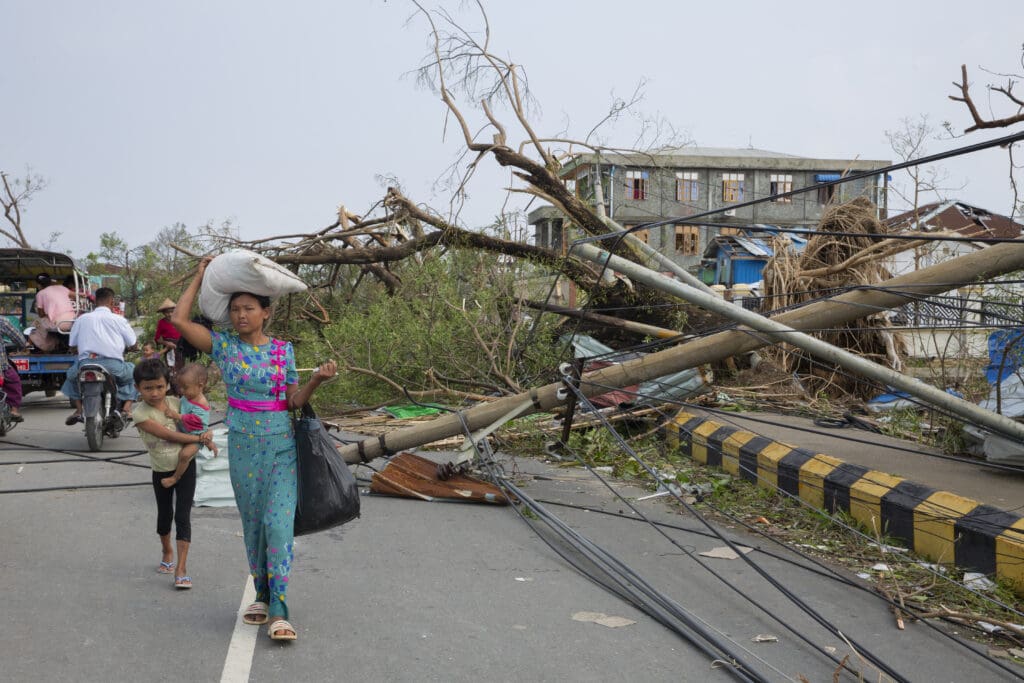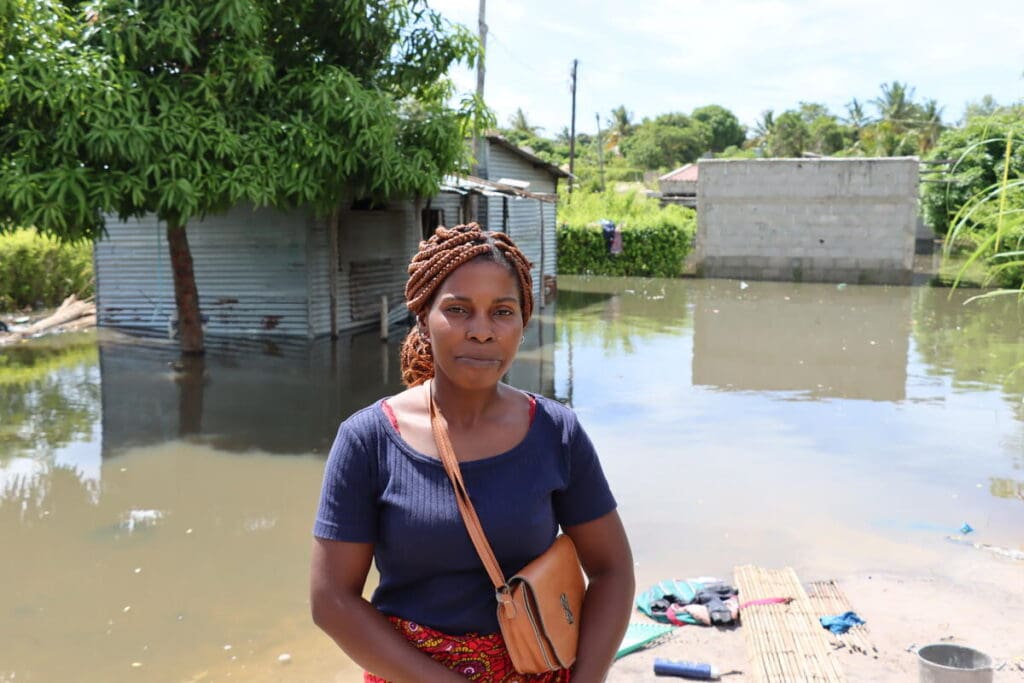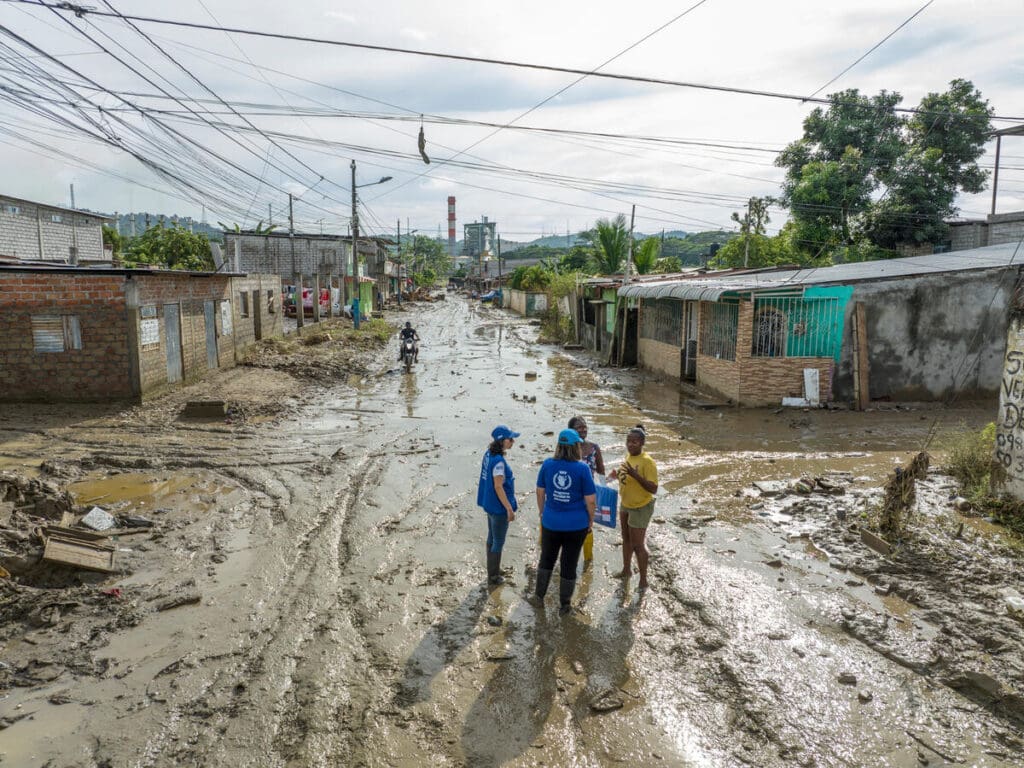Worst Climate Disasters of 2023 and Their Effects on Global Hunger

The climate crisis tightened its grip in 2023. July was the hottest month ever recorded. Over the summer, sea surface temperatures soared and surpassed the highest levels on record. On November 17, the Earth’s surface temperature briefly averaged 2 degrees above preindustrial levels – a threshold the Intergovernmental Panel on Climate Change has warned could have catastrophic consequences.
The climate crisis is causing more frequent and intense extreme weather events. Over the past decade, 1.7 billion people have been affected by extreme weather and climate-related disasters like hurricanes, cyclones and droughts. These disasters continue to drive more and more families into severe levels of hunger.
Here are six of the worst climate-related disasters recorded last year.
Floods Hit Zambia
Over the last decade, Zambia has faced prolonged dry periods, extreme heat and devastating floods. On February 7, Zambia experienced its most intense flooding in over 50 years. After two days, the rain caused significant flooding in nine provinces. The floods affected over 25,000 households, and 400,000 people required humanitarian assistance.
The U.N. World Food Programme has worked in Zambia since 1967. In response to the February floods, we directly assisted survivors of the floods with cash and food.
Tropical Cyclone Freddy Batters Mozambique
On February 24, Tropical Storm Freddy landed in Mozambique and brought up to 11.8 inches of heavy rain. Two weeks after its first landfall, now Tropical Cyclone Freddy, the world’s most energetic storm on record, reached Mozambique for a second time. Communities in Malawi and Madagascar were also heavily affected.
In Mozambique alone, Tropical Storm Freddy and Tropical Cyclone Freddy injured 698 people, killed 183 people, internally displaced 123,000 people, and destroyed 132,000 homes. Flooding affected over 2,381,354 acres of land (about the size of Connecticut) and spread waterborne diseases.
Since April 2023, the U.N. World Food Programme has provided food and nutrition to over 150,000 people in Mozambique. As part of our emergency response, we also transported humanitarian cargo including water, sanitation and hygiene items.

Cyclone Mocha Affects Myanmar and Bangladesh
Cyclone Mocha made landfall on May 14 and exacerbated an already precarious hunger situation in both Myanmar and Bangladesh.
In Myanmar, 3.4 million people lived in Cyclone Mocha’s hardest hit area. The cyclone caused saltwater intrusion that impacted Myanmar’s agricultural land and drinking water and extensive damage to crops. In Bangladesh, the cyclone severely affected 780,000 people, including 536,000 Rohingya refugees, and exacerbated the Rohingya refugee camps’ already dire conditions.
Within the first three weeks of its Myanmar cyclone response, the U.N. World Food Programme reached 394,000 people. In Bangladesh, the U.N. World Food Programme supported over 14,100 cyclone-affected people with fortified biscuits and hot meals.
Floods Bring Heavy Rainfall in Ecuador
Ecuador is highly exposed to natural hazards including floods, landslides, droughts, earthquakes and volcanic activity. Extreme climate-related events have become even more frequent over the last decade.
On June 3, heavy rains caused the overflow of seven rivers in Ecuador’s northwest Esmeraldas Province. After 12 hours of heavy rainfall, the rivers overflowed and more than 500 people were evacuated from their homes. Houses were destroyed and swathes of land submerged underwater.
In response, the U.N. World Food Programme supported six shelters throughout July and helped serve 200,000 hot meals to people affected by the floods.

Historic Storm Daniel Slams Into Libya
Storm Daniel is expected to be the deadliest and costliest Mediterranean storm ever recorded. On September 10, the storm slammed into northeast Libya. Entire neighborhoods in the city of Derna disappeared underwater. Strong winds and heavy rainfall destroyed infrastructure, including roads and telecommunications networks. Over 43,000 people were forced to flee their homes and 9,000 people were missing. According to climate scientists, human-induced climate change increased the likelihood of torrential rainfall in Libya by 50%. Storm Daniel’s torrential downpour also hit Greece, Bulgaria and Türkiye.
The U.N. World Food Programme reached 558,569 affected people with food or cash assistance. We continue to transition our response from emergency assistance to long-term programming to help families recover.

Hurricane Otis Lands in Mexico
On October 25, Category 5 Hurricane Otis landed over Acapulco in the Mexican Pacific. It was one of the strongest storms ever recorded to hit the Pacific Coast of Mexico. According to state reports, Hurricane Otis killed 47 people, destroyed 50,000 homes and damaged an additional 273,844 homes.
On top of El Niño, scientists say human-induced climate change fueled Hurricane Otis’ swift intensification: Before picking up, Hurricane Otis passed over a warm patch of ocean that was about 88 degrees – more than enough ocean heat to fuel a “monster storm.”
The United Nations in Mexico responded to the affected area, in coordination with the government and local authorities. The U.N. World Food Programme does not currently work in Mexico and needs to be invited in by a country’s government to begin operations.
Extreme weather events drive hunger by:
- destroying agricultural land, livestock and crops.
- displacing families from their homes, which cuts them off from steady sources of food.
- degrading land, which leaves small-scale farmers without the means to grow their own food.
The U.N. World Food Programme is working hard to meet the immediate and long-term needs of communities affected by the climate crisis.
Learn more about the U.N. World Food Programme’s climate action work >
Learn more about how climate change affects world hunger >
The sharing of any news story is not an endorsement by the United Nations World Food Programme (WFP) or World Food Program USA of that news outlet, its views, or that of its writers. WFP and World Food Program USA are independent entities, and we make every effort to share accurate information with you.




